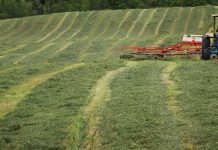Time is like a snowflake — it melts away while we try to decide what to do with it.
— Anonymous
As we reflect on a new year, some may make resolutions, reflect on occurrences during the past year and make plans for the upcoming year. Most all of us struggle with “having enough time during the day.” Yet, each of us has the same amount of time — 24 hours per day, seven days per week, 52 weeks per year.
Management
Our circumstances may influence the time we have available for certain uses; however, time is a resource that is available for us to manage. As we make plans for effective use of our time and the quote states above, some of our time is used as we decide on what to do with it.
Obviously, how we use our time is important. At the start of this new year, have you assessed how you are spending your time? If you have teenagers, you have probably questioned the time they spend at sports, on the cell phone, with ear plugs stuffed in while listening to music, number of hours in front of the television, etc.
Maybe you been evaluating how your employees are spending their time. How about your cows? What are they doing with their time and how much does your management and the facilities directly or indirectly affect what they are doing with their time?
Think about it — using 205 cows in 16 freestall barns, University of Wisconsin researchers observed the following activities: cows were milked 2 to 3 times per day and spent 2.7 hours per day milking (included holding pen and walking to and from parlor), 4.3 hours per day feeding, 2.5 hours per day in the alley (included drinking), 2.7 hours per day standing in stall, 11.9 hours per day lying in stall, 12.9 lying bouts per day and 1.2 hours per lying bout.
Studies
Researchers in Finland using 29 cows in a tiestall barn observed the following behaviors: 3.6 hours per day eating, 10.5 hours per day lying and 10.8 lying bouts for multiparous cows (first lactation cows appeared to have more lying bouts).
Higher-yielding cows spent more time ruminating while standing and less time lying than lower-yielding cows.
In another study at the University of Wisconsin, the effect of heat stress was served in 14 cows housed in freestalls: lying time decreased from 10.9 to 7.9 hours per day, time spent standing in the alley increased from 2.6 to 4.5 hours per day and time spent drinking increased from 0.3 to 0.5 hours per day from the coolest to the hottest sessions from the study.
In the United Kingdom, a study was conducted with 59 cows on pasture with access to a partial TMR after milking. Lame cows spent more time lying down compared with nonlame cows. Estrus behavior tended to be less for lame compared with nonlame cows. Lameness did not affect durations of drinking, grazing, or ruminating.
Rumination chewing rates were the same for lame and nonlame cows, and there was no association between lameness and dominance/displacement while feeding at a feed fence. Lame cows had a slower bite rate at pasture and had a lower body condition score. Lame cows were nearer the rear of the herd, both as they left the field and when entering the milking parlor.
Monitoring
Time monitors for placement on individual cows are becoming more commonplace on dairy farms. Some of these devices are being used to determine relative change in activity of cows to reflect estrus and health status.
As the technology of these devices continue to advance, additional information will be available from them about what the cow is doing during the day for use in management.
(The author is a professor and Extension dairy specialist at Ohio State University.)












